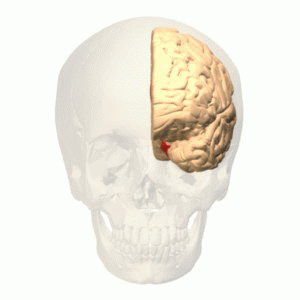VH
Variable Hybrid
- MBTI
- NFJedi
The human mind is made up of defined regions in the brain. While science hasn't defined all the regions of the brain, we have mapped out quite a few and have a rather solid grasp on what these regions do.
In particular, we've mapped out the limbic system. Here is a brain scan of a highly limbic mind, outlining the limbic system and its components very well.
View attachment 3161
And here are some illustrations of these areas to help understand the proximity of these regions to one another.
View attachment 3162
View attachment 3163
And here is a rotating 3D model showing the Limbic System in red.

From what we can tell, the cognitive functions strongly reside in various regions of the brain, as people who have dominant functions show elevated activity in these respective regions. In particular, Ni is showing itself to be strongly centered in the Cingulate System, but not the rest of the Limbic System. While Fi and Ne are showing themselves to be centered in the overall Limbic System, with Ne leaning toward the Cingulate side of the Limbic System and Fi leaning toward the more instinctive side of the Limbic System. Fe appears to be a mix of the more instinctive side of the Limbic System and Frontal Lobes. Interestingly enough, Te appears to be dominantly centered in the Frontal Lobes.
The next thing to understand about the brain is that it is a gigantic neurochemical mass. Note, the use of the term chemical. It is a well established fact that areas of neural activity will stimulate nearby clusters of nerves. High amounts of activity in one area of the brain will stimulate other nearby regions of the brain because the chemical and electrical activity will physically seep into other parts of the brain.
All of this scientific and medical jargon is going somewhere, I promise.
What this means for any personality type is that the cognitive processes that the individual uses on a regular basis will greatly stimulate those areas of the brain, and the regions near those areas are likely to be stimulated as well, likely resulting in eventual development.
For the INFJ mind, this means that the individual inherently has a highly active Cingulate System, as well as a moderately active lower Limbic System and Frontal Lobe. As the individual develops more and more capacity with Ni, the Cingulate System begins to stimulate the remaining Limbic System, as well as some of the depper Frontal, Parietal, and Temporal Lobe regions (reinforcing Fe, but also stimulating Ti and Se) that are nearby. Meanwhile, as the INFJ develops Fe, they will also stimulate other areas of the Limbic System (reaching into Fi and Ne territory) and the Frontal Lobe (reaching into Te territory). This is why so many INFJs develop Ni, Fe, Fi, and Ne preferences, and are prone to also develop rather solid Te. This is also why INFJs seldom develop much in the way of Se and Si, because the regions of the brain which are most active for these functions are further from the primary centers of activity for an INFJ.
Interestingly enough, there is a fair amount of overlap with the other NF types and cognitive processes due to the nature of where the processes reside physiologically. Ni, Ne, Fi, and to a lesser extent Fe all seem to have the most activity concentrated in the Limbic and Cingulate Systems. This is why there are so many similarities in preferences in the more developed INFJs, ENFJs, INFPs, and ENFPs.
It also stands to reason that this pattern of development and similarity would apply to the other type groups, such as Keirsey's SJ, SP, and NT models. As I do more research on the remaining cognitive processes and their dominant regions, I will not be surprised if I uncover similar connections.
Anyway, this is a physiological explanation for all of this stuff we've been discussing.
In particular, we've mapped out the limbic system. Here is a brain scan of a highly limbic mind, outlining the limbic system and its components very well.
View attachment 3161
And here are some illustrations of these areas to help understand the proximity of these regions to one another.
View attachment 3162
View attachment 3163
And here is a rotating 3D model showing the Limbic System in red.

From what we can tell, the cognitive functions strongly reside in various regions of the brain, as people who have dominant functions show elevated activity in these respective regions. In particular, Ni is showing itself to be strongly centered in the Cingulate System, but not the rest of the Limbic System. While Fi and Ne are showing themselves to be centered in the overall Limbic System, with Ne leaning toward the Cingulate side of the Limbic System and Fi leaning toward the more instinctive side of the Limbic System. Fe appears to be a mix of the more instinctive side of the Limbic System and Frontal Lobes. Interestingly enough, Te appears to be dominantly centered in the Frontal Lobes.
The next thing to understand about the brain is that it is a gigantic neurochemical mass. Note, the use of the term chemical. It is a well established fact that areas of neural activity will stimulate nearby clusters of nerves. High amounts of activity in one area of the brain will stimulate other nearby regions of the brain because the chemical and electrical activity will physically seep into other parts of the brain.
All of this scientific and medical jargon is going somewhere, I promise.
What this means for any personality type is that the cognitive processes that the individual uses on a regular basis will greatly stimulate those areas of the brain, and the regions near those areas are likely to be stimulated as well, likely resulting in eventual development.
For the INFJ mind, this means that the individual inherently has a highly active Cingulate System, as well as a moderately active lower Limbic System and Frontal Lobe. As the individual develops more and more capacity with Ni, the Cingulate System begins to stimulate the remaining Limbic System, as well as some of the depper Frontal, Parietal, and Temporal Lobe regions (reinforcing Fe, but also stimulating Ti and Se) that are nearby. Meanwhile, as the INFJ develops Fe, they will also stimulate other areas of the Limbic System (reaching into Fi and Ne territory) and the Frontal Lobe (reaching into Te territory). This is why so many INFJs develop Ni, Fe, Fi, and Ne preferences, and are prone to also develop rather solid Te. This is also why INFJs seldom develop much in the way of Se and Si, because the regions of the brain which are most active for these functions are further from the primary centers of activity for an INFJ.
Interestingly enough, there is a fair amount of overlap with the other NF types and cognitive processes due to the nature of where the processes reside physiologically. Ni, Ne, Fi, and to a lesser extent Fe all seem to have the most activity concentrated in the Limbic and Cingulate Systems. This is why there are so many similarities in preferences in the more developed INFJs, ENFJs, INFPs, and ENFPs.
It also stands to reason that this pattern of development and similarity would apply to the other type groups, such as Keirsey's SJ, SP, and NT models. As I do more research on the remaining cognitive processes and their dominant regions, I will not be surprised if I uncover similar connections.
Anyway, this is a physiological explanation for all of this stuff we've been discussing.
Last edited:

